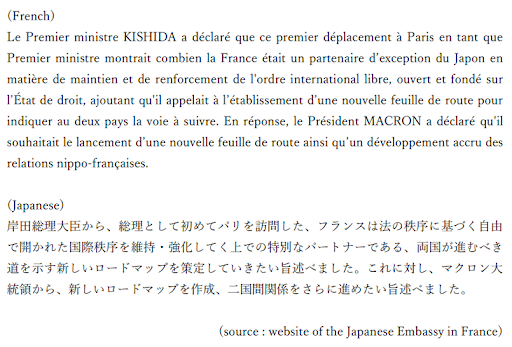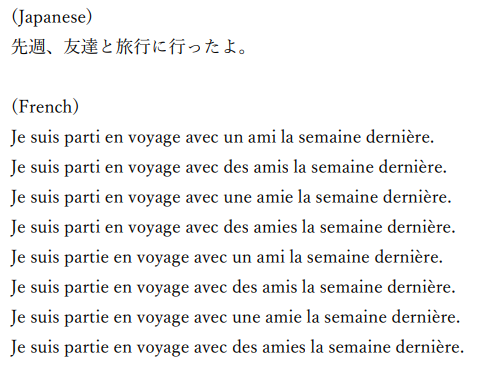The Japanese market is one of the most attractive in the world… With a population of over 125 million, a high savings rate and people that are very interested in Western culture. There are many advantages to localizing your products into Japanese.
However, localizing Western languages into Japanese can be a challenge if you are not familiar with the characteristics of the Japan’s language and culture. Even though you have advanced tools for machine translation today, it does not work as well as localization between English and French, for example. In addition to “high contextuality” of the Japanese culture and the fact that the way of speaking or writing in this language depends a lot on age, gender, social status and region, the difference in language structure itself is huge, so even if the result of machine translation is grammatically correct, it may be weird for the native Japanese. You still need human review.
In this article, we will take a case of localization from French to Japanese. And we will give you some tips useful for the localization process.
Japanese writing systems
In Japanese, there are three writing systems called hiragana, katakana and kanji. The first two systems are used to represent 46 sounds (corresponding to syllables) respectively. For native Japanese words and words borrowed from other languages. Kanji, imported from the Chinese writing system, are ideograms that have their own meaning. There are many kanji, and you need to know between 2000 and 3000 kanji to read Japanese newspapers.
This language is written in a combination of these three writing systems, and the “mix rate” varies depending on the language register or the type of content. In general, they tend to use more kanji for official documents, theses, newspapers, etc. For SNS, magazines or books with “light” content, they try to use less kanji and more hiragana to make them more accessible to everyone. When they write an article that explains French pastry, for example, there will be a lot of katakana, because there are a lot of words borrowed from French.
The number of letters
In general, when translating from French to Japanese, the number of letters is reduced by about 30%. Moreover, the more kanji a text uses, the shorter it is. So, when you use a very formal language register, with a lot of kanji, the translated text will be shorter than it would be in a colloquial language. Therefore, when translating from French to Japanese, you have to take into account the different language registers and the space you have available for a translated text.
Here is an example that illustrates this issue. The original text of 6.2 lines in French was reduced to a text of 4 lines in Japanese, in a very formal language register.

Is Japanese written vertically or horizontally?
Japanese is one of the few languages that are written both vertically and horizontally. Historically, it was written vertically, from top to bottom, with multiple columns of text progressing from right to left. At the end of the 18th century, under the influence of the Western writing system, Japanese began to be written horizontally, from left to right. But how do you know which one to use?
Generally, horizontal writing is used to write text with logical content, such as contracts or manuals. Because of mobile phones and tablets, young people are more used to horizontal writing. So if you are targeting the younger generation, better choose horizontal writing. On the other hand, vertical writing is suitable for texts with emotional content, such as novels. On the newspapers, it is written vertically. If you are targeting elderly people or creating a package of a typical Japanese product, perhaps it is better to write it vertically.
Clear language VS ambiguous language
Japanese nouns have no gender difference and no singular and plural difference, unlike French nouns. So, as the example below shows, a Japanese sentence has many possibilities of translation in French. The translator has to know the gender of the person who speaks… And the gender and number of 友達(friend(s), ami(e/s)) to translate correctly.

Moreover, in Japanese, neither the subject nor the object is mandatory. And it is even natural to not have them when the situation is clear between the speakers. In French, even when the situation is clear, the grammatical rules always require the subject and, depending on the verb, the object.
When translating from French to Japanese, it would be a bit weird to put all the information to make a clear sentence. If there is a subject and an object in a sentence whereas the context allows us to understand the sentence without these subject and object, it is very unnatural for Japanese native speakers. They would doubt that the sentence was automatically translated. On the contrary, to translate from Japanese to French, the translator needs more information and context. The translator needs to know who does something to whom. Even if it is not explicitly mentioned in a Japanese original version.
And your turn!
In this article, I’ve given you some tips for localization and translation in the Japanese market. The more you learn about language and cultural differences, the smoother and more enjoyable your localization journey will be. Welcome to the exciting world of localization!
If you are interested in this field, check the TCLoc Master’s curriculum!



